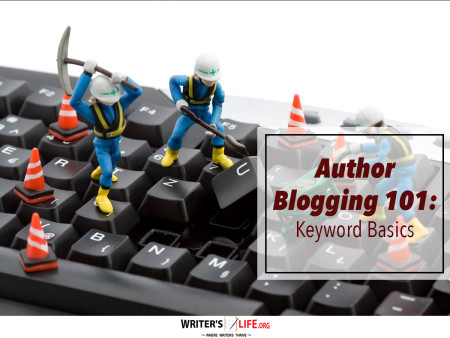- How To Tackle Jealousy In Creative Writing
- Common Submission Mistakes
- How To Stop Your Blog Becoming Boring
- The One Thing Every Successful Writer Has In Common
- How To Make Yourself Aware Of Publishing Scams
- Why Almost ALL Writers Make These Grammar Mistakes At Some Point
- 5 Tips For Authors On How To Deal With Rejection
- Top Mistakes to Avoid When Writing a Novel
- How to Avoid Common New Writer Mistakes
- 10 Mistakes New Fiction Writers Make
How to Create a Simple Publishing Agreement With a Co-Author

Creating a Co-Author Agreement is an essential step when embarking on a collaborative writing project. It not only clarifies each author's responsibilities but also helps prevent potential misunderstandings down the line. Whether you're delving into the realm of novel co-authoring or crafting compelling non-fiction with a partner, having a solid guideline makes the collaborative journey smoother and more rewarding.
Navigating Co-Author Contract Basics
Understanding the fundamentals of a Co-Author Contract is crucial. At its core, this type of contract functions as a mutual agreement between two or more writers, outlining each participant’s rights and responsibilities. The basic components generally include the project scope, percentage of work, deadlines, and revenue shares. It's less about dictating terms and more about cementing the foundation of your creative alliance. Think of it as a treasure map that guides both authors to the shared goal of publication without losing track of the way.
Writing isn't always a solo endeavor. Sometimes it takes two creative minds to bring a unique vision to life. By clearly defining roles and expectations, a Co-Author Agreement transforms potential pitfalls into points of strength. Plus, a well-drafted contract can save you from diving into unforeseen waters that could disrupt your partnership.
Effective Co-Writing Agreement Tips for a Successful Collaboration
Now that you have a grasp on what goes into a contract, let's explore some Co-Writing Agreement Tips to consider. Start by pinpointing each author's strengths—who is the storyteller, who excels in research, and who's the logistical mastermind? Transparency is key. Discuss every detail and how you'll handle potential hurdles like disagreements or creative blocks. It's all about setting realistic boundaries and solutions ahead of time, sparing your partnership from future stress.
Moreover, remember to address intellectual property rights. Who owns what, and how will the rights be shared or divided? Clear terms elucidate the path forward if you decide to chase other projects or publish further works independently. This ensures that both partners benefit equally from their efforts.
A Closer Look at Joint Publishing Agreement Terms
In a Joint Publishing Agreement, think of the terms as the pillars of your collaborative writing venture. Whether you publish through traditional avenues or go the self-publishing route, each choice brings its own intricacies to the table. By mapping out specifics like submission deadlines, publication mode, and promotional efforts, you’re building a shared toolkit that anticipates every major decision.
- Define your creative roles – who edits, who designs?
- Agree on the final say regarding controversial content.
- Clarify how sales and marketing efforts will be shared.
- Specify what happens if one party fails to uphold their part of the contract.
These Author Partnership Terms help you both tackle unforeseen challenges with clarity, ensuring you remain partners in a thriving writing process. According to Wikipedia, effective partnerships can significantly increase the quality and reach of a published piece, leading to higher satisfaction rates for authors.
Exploring Co-Authoring Agreement Challenges
Every collaborative project encounters its own unique set of challenges. Let's not sugarcoat it: maintaining a harmonious co-author relationship while delivering a powerful narrative can be as intricate as mastering a symphony. The key lies in addressing these Writing Agreement Challenges before they become roadblocks.
Disagreements in vision can occur, especially in the creative development phase. Consider implementing a tie-breaking mechanism or mediator to resolve differences. It's all about managing expectations and retaining the mutual respect that initiated your venture in the first place.
Don't shy away from confronting external logistical issues like differing time zones, resource allocation, and communication difficulties. Set a regular meeting cadence and choose collaboration tools that suit your workflow to keep the creative juices flowing seamlessly.
Frequently Asked Questions About Co-Author Agreement
Q: What should a Co-Author Agreement include?
A: A Co-Author Agreement should include roles and responsibilities, project scope, financial arrangements, deadlines, intellectual property rights, and dispute resolution methods.
Q: Is a Co-Author Agreement legally binding?
A: While not all Co-Author Agreements need to involve lawyers, they are legally binding if both parties consent to the terms and sign the agreement.
Q: How can I ensure my Co-Author Agreement is fair?
A: To ensure fairness, involve all parties in the drafting process, communicate openly about concerns, and consider having a third party review the agreement if necessary.
Inside the thrilling world of collaborative authorship, your Co-Author Agreement is genuinely your north star. It highlights the path and potential pitfalls, guiding you and your partner toward a successful writing journey. Want to promote your book after it’s published? Check out our Book Marketing Articles.
If you're serious about growing your author career, don't miss out on these free tools and templates built specifically for writers. Access all 7 free resources here.



























